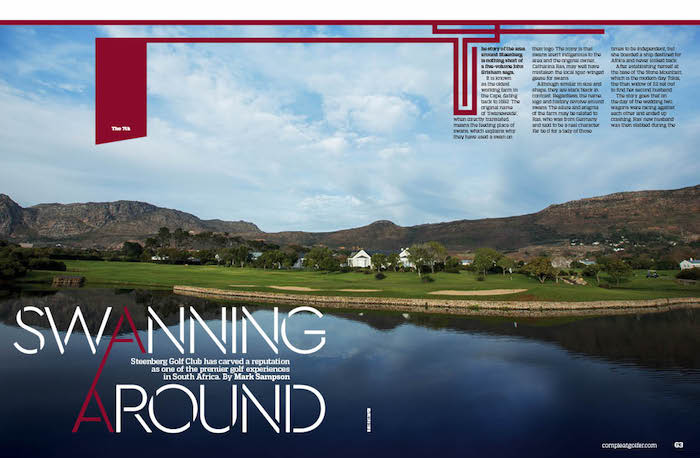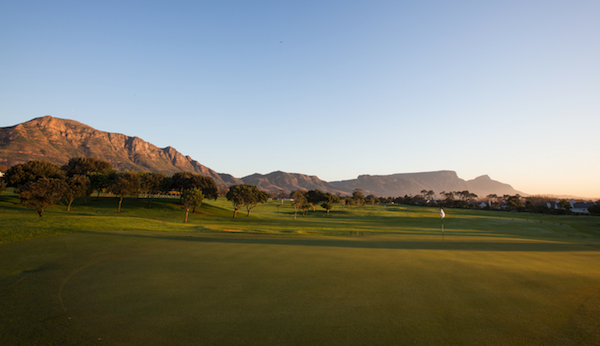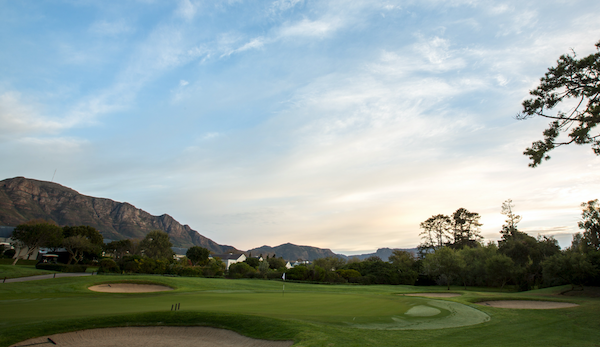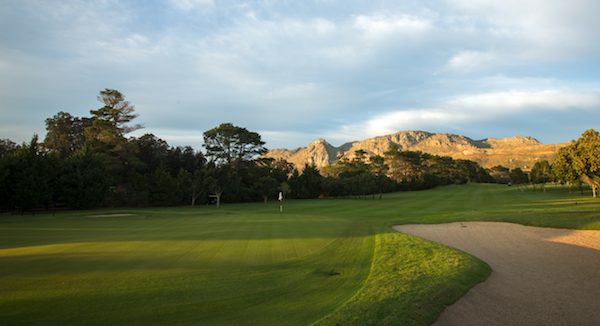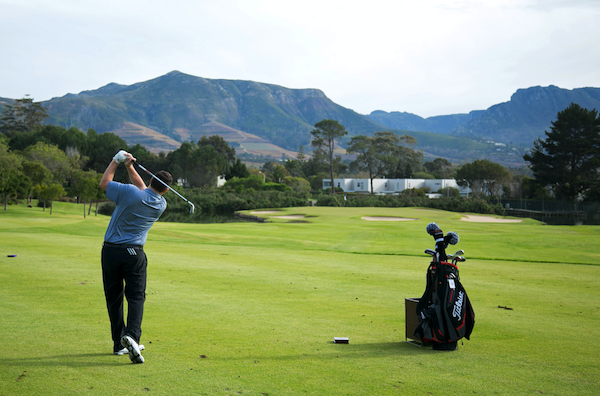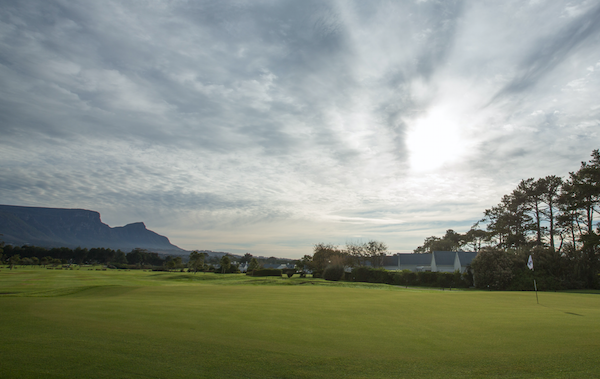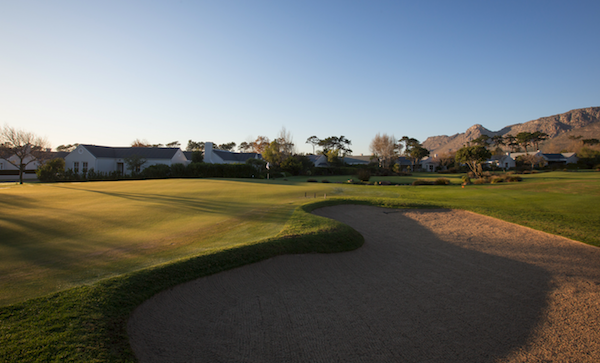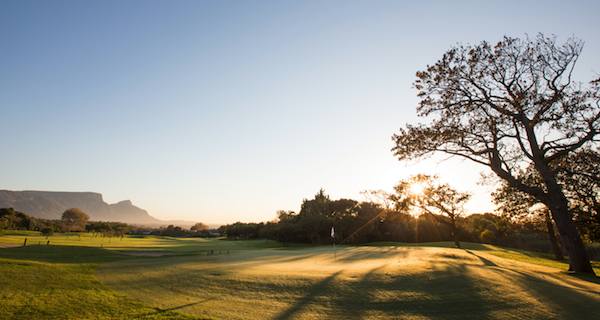Steenberg Golf Club has carved a reputation as one of the premier golf experiences in South Africa, writes MARK SAMPSON in Compleat Golfer.
The story of the area around Steenberg is nothing short of a five-volume John Grisham saga.
It is known as the oldest working farm in the Cape, dating back to 1682. The original name of ‘Swaneweide’, when directly translated, means the feeding place of swans, which explains why they have used a swan on their logo. The irony is that swans aren’t indigenous to the area and the original owner, Catharina Ras, may well have mistaken the local spur-winged geese for swans.
Although similar in size and shape, they are stark black in contrast. Regardless, the name, logo and history revolve around swans. The allure and enigma of the farm may be related to Ras, who was from Germany and said to be a real character. Far be it for a lady of those times to be independent, but she boarded a ship destined for Africa and never looked back.
After establishing herself at the base of ‘the Stone Mountain’, which is the modern-day Tokai, the then widow of 22 set out to find her second husband.
The story goes that on the day of the wedding two wagons were racing against each other and ended up crashing. Ras’ new husband was then stabbed during the ensuing fight. He survived the stab wound but later died in a lion attack. Unperturbed, Ras acquired a third husband, who was murdered by a local, while a fourth husband succumbed to injuries sustained when he was mauled by an elephant.
The real history of Steenberg began when Ras, by now known as ‘The Widow Ras’, leased 21.4 hectares of land from Simon van der Stel. The agreement was she would cultivate, plough and sow on the land. And so the farm of Steenberg began.
The farm has had a number of owners over the years and was ultimately acquired for redevelopment in 1990 by JCI (Johannesburg Consolidated Investments). In 2005 Graham Beck’s Kangra Group purchased Steenberg Hotel and Winery on the property, and it now operates as Graham Beck Enterprises.
The course is another Matkovich and Hayes masterpiece. It meanders through the 210-odd houses in the complex below the Stone Mountain, between numerous vineyards and water features. It is relatively flat with not much change in altitude. Although a number of greens are raised, it is an easy walking course at only 5 885m.
The front nine lies below the clubhouse and starts with a 360m par four. If the wind is up, it is a difficult start, which accounts for the stroke-two label. An uphill par three with a relatively small, sloping green follows on the 2nd.
The 3rd is when Steenberg starts to show its true colours, requiring course management and accuracy. Tall pine trees beside the vineyards on the right catch your eye off the tee. Although not long, the fairway narrows from the tee before dropping down to the green. What you can’t see from the tee is that the fairway widens beyond the pines into a generous landing area. Don’t go long on your approach.
The 4th is short at 310m, but the 12 bunkers along the way to the green emphasise the need for accuracy.
The par-five 5th is the longest hole on the course at 520m. Although dead straight, accuracy off the tee is required to avoid trouble in the form of a well-bunkered landing area. The lay-up should ideally end up on the right side of the fairway to allow better access to the green with its bunkered entrance. Leaving the ball below the hole is also advisable on this undulating green.
The signature hole of the course is the 7th, a slightly downhill picture-perfect par three. Golf director Justin Roux gives us tips on how to tackle this dangerous hole:
The 7th at Steenberg is a stunning short hole. From tee to green it is only 145m with a slight drop in elevation to a green well protected by bunkers and water beyond.
There have been changes to the bunkering, which have improved the aesthetics and playability, according to golf director Justin Roux.
The green used to be encircled by one bunker, which entered the water. Unfortunately, when there was a lot of rain, the bunker would become wet and hard, making getting out difficult.
The bunker was broken into three separate hazards and these were raised to keep them dry. The shorter hitters were thus given access to the green via the fairway.
According to Roux, the prevailing wind, the south-easter, comes over your left shoulder, so the 145m should be within reach for most golfers. If the wind is blowing, the left side of the green is the best line to allow the ball to move towards the centre of the green. This should be the target, regardless of where the flag is positioned.
Keep in mind it slopes up from front to back, so leaving the ball below the hole is advisable. The tee to green area may not look that big but there is a lot of space to land the ball.
As always, pick your club and commit to the shot. Don’t forget to enjoy the view as you walk off the back of the green.
A short par five and four lead you back to the clubhouse.
The back nine is the tougher of the loops, where accuracy becomes increasingly important. The opening 10th and 11th are perfect examples of this as they are short at 350 and 310m respectively. However, any wayward shots off the tee will result in having to knock on a resident’s door to ask for your ball back, or take a drop beside one of the many water hazards.
As far as par fives go, the 12th is another short hole at only 430m, but don’t be fooled. The fairway is strangled down the left side by a massive waste bunker, while trees flank its entire right side. The hole rises up to the green with another bunker, for good measure, front left, before reaching a severely sloping green. Going for it in two could end up in tears, especially if you go long.
Holes 13, 14 and 15 are some of the more challenging on the course, a bit of an Amen Corner that can make or break a good round.
The 13th is a 340m left-to-right par four. The landing area dogleg is riddled with bunkers on both sides of the fairway. Finding the elevated green is always a tough ask and its small surface contributes to the low stroke of three. The short 14th is another well-bunkered hole with a long, undulating green, reputed to be the largest in southern Africa. This hole is all about finding the surface and two-putting.
The 15th completes the trio of holes perfectly in the form of the stroke-one 370m par four. It is another left-to-right dogleg with bunkers in the landing area. It’s generally played into the prevailing wind and requires two good knocks to reach the green. With bunkers front left and back right, the hole is completed by an old oak, which from a distance appears to hang over the green. Walk away with a par here and you have done well.
The final hole at Steenberg is a perfect summary of what the course is about. With mountains behind you, the hole stretches down towards the clubhouse in the form of a 465m par five. Again, not overly long, but it is segmented by a water hazard making its way down to the dam on the right of the green. Accuracy off the tee, lay up and approach is non-negotiable to avoid a lost ball. Par on this hole isn’t a bad ending to what is guaranteed to be a memorable round.
You would be hard pressed to find a more hospitable and welcoming clubhouse than at Steenberg. The entire experience at this estate is seamless and consistently good. And it’s not only about the golf, as it has so much more on offer. Where else can you play golf among some of the oldest vineyards in the country, with a spa, bistro and hotel all within a pitching-wedge distance away?
If it was good enough for Simon van der Stel and Widow Ras, who are we to argue with its location, which has stood the test of time and the great storm of 2017?
‘At the dawning of the Cape, the swans rejoined, feeding in paradise at the foot of the Steenberg Mountains.’
CONTACT DETAILS
Bookings and enquiries: 021 715 0227
steenberggolfclub.co.za
Email: [email protected]
@SteenbergGC
– This article first appeared in the July issue of Compleat Golfer


